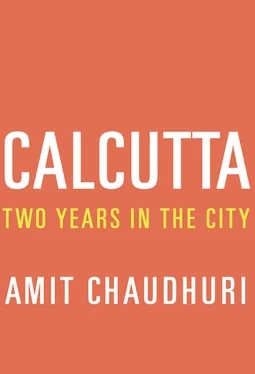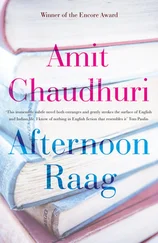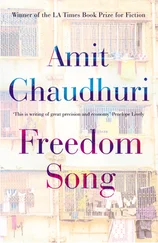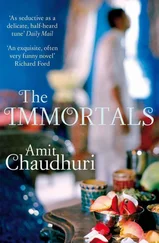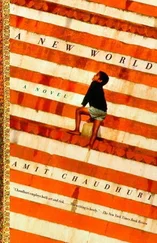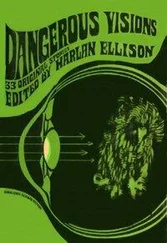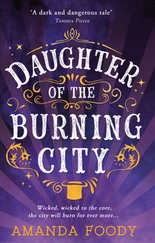Globalisation may have come to Calcutta in relatively small doses, but it has nevertheless entered people’s bloodstreams; it makes them behave in certain ways. There was a time when bandh days — days of (usually) twelve-hour-long closure enforced by a political party or even the state government to protest one grievance or another — were total write-offs, neither working days nor holidays (since no one risked going out till 6 p.m.), but, instead, longueurs of monastic contemplation. In today’s Calcutta, this doesn’t hold. I noticed this more than a year ago on going to the Forum — wondering if our tickets for the 6:30 p.m. show of a movie were any good after a bandh (introduced whimsically, without much prior warning) whose cut-off hour, as usual, was six o’clock. Instead, I found the Forum as stiflingly crowded with shoppers, film-goers, idlers, and the curious — generally, people at once importunate and at a loose end — as a rave is full of, and pulses with, revellers. They’d clearly rushed out of their abodes in the last thirty minutes (as had we), as soon as the clock struck six, to congregate here. This is what globalisation, more potent than a booster injection, more tenable than an infection, is capable of doing; of being, even before it’s a reality, a symptom.
Sunday, now, is the busiest day of the week. In the India I grew up in, Sunday reached its peak around midday with Ameen Sayani’s sonorities on the Bournvita Quiz Contest (which only had a following among proven devotees of radio), then declined into the ennui of afternoon and the Sunday Hindi film, all that happened later falling headlong towards the pointless human struggle that was Monday. In England (though things improved in the nineties), I was aware of Sunday being an abyss to the soul, a precipice that stealthily opened after Friday’s and Saturday’s crowded frenzy. Today, the fact that the Protestant work ethic (of which Monday is the prophet and beacon) has lost its reproachful edge in Calcutta is clear from how unbearably busy Sunday evenings are — with long traffic jams in front of South City Mall, and not a table free in restaurants on Park Street. All this — in a city without any demonstrable reasons for consumerist hope or activity. Shaped by student life in England, my wife and I are aghast at this frenetic sociability before the new week begins, this almost philistine uncaringness for the idea of Monday morning. “Indians have no thought for tomorrow,” she says with Olympian finality, as if commenting on a race she’s recently discovered.
Malls, these days, are where you go in good times and bad, however variable or uncertain the future. When they first began to come up, they were looked upon by the last progeny of the bhadralok with a mix of suspicion, regret, and grudging pride, as standard bearers and omens of the city to come. Regret, because they often came up in what were, to the bhadralok, historic locations — as in the genteel calm (a calm that indicated, by the eighties, a condition close to extinction) of Elgin Road, from where the aristocracy had either departed, or closed ranks on the world. Here rose the Forum, a dazzling two hundred thousand square foot space on six levels, inclusive of a cinema multiplex and, later, a many-tiered car park. Almost next to it, on its right (if you’re facing the Forum from the Elgin Road entrance), is the art deco house which has always puzzled me, now in near-desuetude, wittily recalling a ship, complete with portholes, alluding to some maritime fancy, its driveway and porch obscured by foliage. How can it, with its air of being afloat, not bring to mind the de Chirico painting Naipaul describes? Opposite, the Forum overlooks the Netaji Bhavan, the house where Subhas Chandra Bose lived, and then fled the British, and India, in disguise, finally resurfacing in Japan as the Commander in Chief of the Indian National Army, never after to be glimpsed again. Next to this mysterious building, which is still pervaded by a misplaced undercurrent of loss for the youthful, bespectacled Bose, is Brajen Seal’s mansion — not the philosopher Brajen Seal, but another — which resembles a book open at several pages, a house in which no one could possibly live, so quiet it is, its gate fronted by an improvised tea stall under a tree, and a phalanx of drivers biding their time while their employers shop in the Forum. I once trespassed into this place during the monsoons on the pretext of looking for someone, just after it had stopped raining at dusk, brazenly climbing up the stairs to the first floor, intuiting the presence of others, entering the hall that went past the closed doors of rooms, noting there was some medicine and a glass of water on a small table, and an easy chair, then shouting, “Hello! Anyone there? Keu achhe? ” No one answered, but I now knew the house was inhabited. I was transfixed — both by my own transgression and by the potted plants on the terrace beyond the blurred window, quietly dripping water.
On the left of the Forum are the Roy Mansions, half of which is now demolished, and half occupied by Simaaya, a resplendent retail outlet for kitschy, expensive saris. Soon after we were married, and before Roy Mansions was forever altered in this way, I went with R and my in-laws to have dinner with her grand-aunt, the late Potty Mami, who lived in slightly shabby many-roomed grandeur in the immense flat on the ground floor, which is today’s Simaaya. There, I was served cold consommé as the first course for dinner, but, before that, instructed in helpful terms of the distinguished maternal lineage of my father-in-law’s extended family, Potty Mami’s recently deceased husband being the grandson of P. K. Ray, the first Indian principal of Presidency College, and she herself the unlikely but friendly granddaughter of the historian R. C. Dutt, author of the Economic History of India among other landmark works. I was only a few months married, and was just being made aware, in this well-meant, intrusive way, of a Calcutta I’d never known, missed, or mourned.
In the Forum, you could forget all about Calcutta, and spectate — the main occupation of the visitors, surpassing even shopping — on the new breed of people walking past. This new breed (to which you yourself belong) may or may not be the citizens of a contemporary India, or even of a new Calcutta, but it’s here you see it in its full, surprising sweep and heterogeneity, ranging from members of the upper class, to the odd European, to college students, middle- and working-class people, and provincial families of different religions, some women fully enclosed in burqas, others flaunting bright saris, these families — especially the women and children — frequently creating an obstreperous distraction before the escalator, akin to inexperienced swimmers by a poolside, wanting, but hesitant, to take the plunge, pleased and shy at once at making an exhibition of themselves, cheered and scolded by the more daring members of the family, averted with an inured sigh by the veteran escalator-users, who dart past them straight into the moving staircase. Years have gone by since the Forum, and then the City Centre at Salt Lake, and then South City Mall near Jodhpur Park (at a million square feet, once the largest mall in Asia; then India; then East India — malls shrink constantly) were opened to the public, but this brief disruption and sundering — the awkward woman and child gazing with an air of judgement at the escalator, the husband and infant in his arms rapidly moving upwards and away from them — continues to recur. This is the new breed, and nowhere does it feel more at home than in the mall.
And it’s always possible to get a sighting of the famous. In the slightly quieter, halcyon days of the Forum, I often spotted June Maliah, reputed for her roles in Bengali cinema and especially soap operas, as she suddenly appeared from the edge of an escalator, or floated easefully a level below with her children. More than once, I’ve noticed the ebullient Bickram Ghosh somewhere in the distance, mast or happily preoccupied like the rest of us. Recently, I saw Srikanto Acharya, the dapper singer of Tagore songs, waiting expectantly before the lift with his family.
Читать дальше
